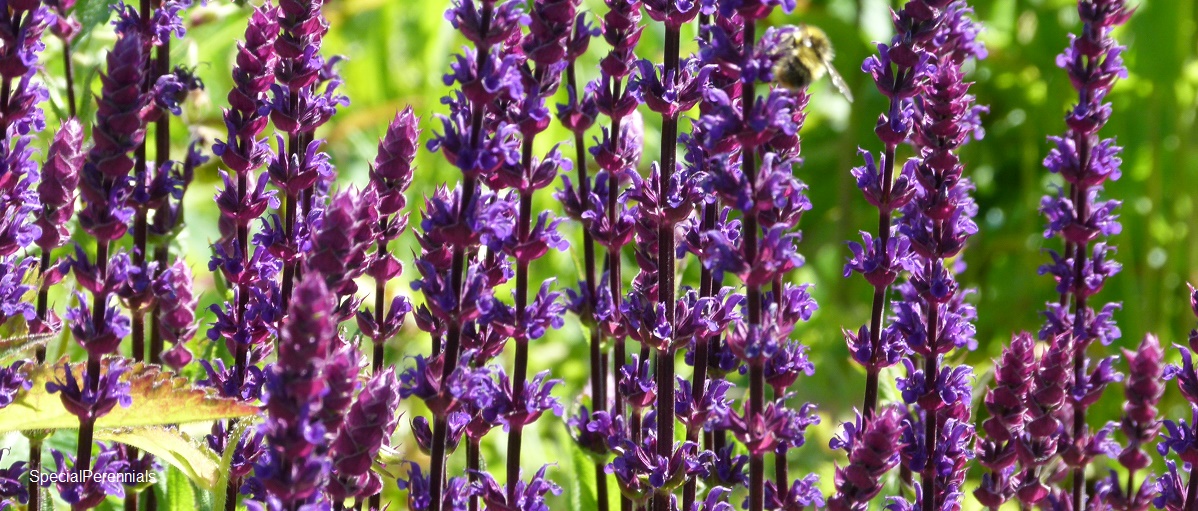
Salvia
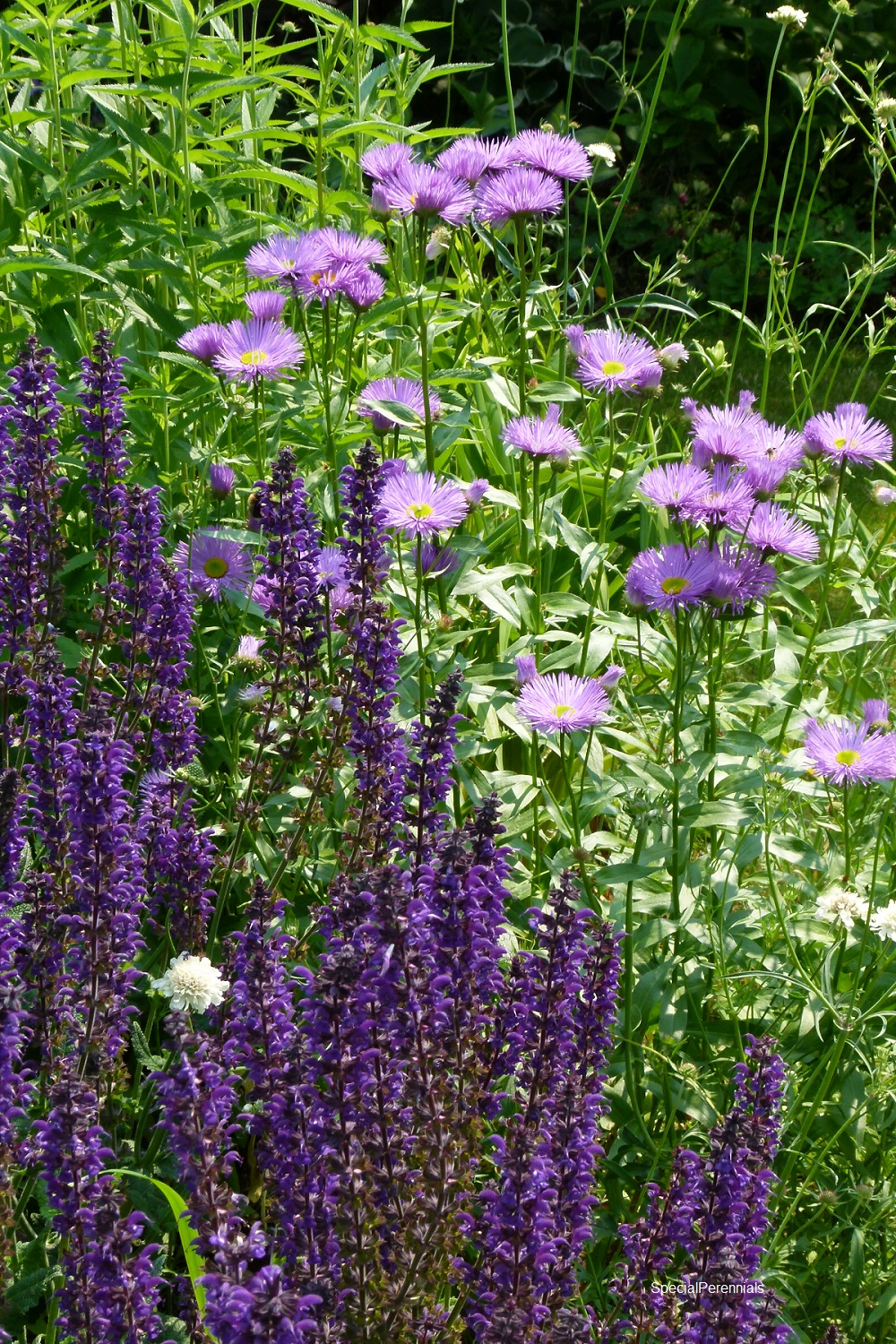
Basic Facts:
A very large and varied genus of plants that includes the culinary herb sage as well as exotic tender plants from the new world. They grow in a wide range of conditions, soils and situations: there is a Salvia for everyone! Care instructions are covered under each variety.
Garden Use:
Most Salvia flower in flushes. The tender, New World types can flower throughout the winter in a warm conservatory or heated greenhouse. Winter conditions can also influence how early flowering starts. For example, after a mild winter S.elegans can start flowering in late May, but after a cold winter when it dies back to its underground root stock, flowering might not start until late July.
Wildlife Interest:
Great bee plants.
Cut Flower Use:
Reasonably long lasting
Cultivation:
See each type as growing conditions vary.
Salvias vary in hardiness and winter care is covered for each variety, but please bear in mind that it is not only cold but wetness that can kill a plant over winter. Many Salvias are very cold hardy but this is because they are covered with a blanket of snow in winter that keeps the roots dry. Others withstand cold winters in mountains which again present very different conditions to the garden. In our details we state how hardy the plants have proved to be in our garden.
Some Salvia prefer warm but slightly shaded spots, but as a general rule in the UK you can't go wrong by putting a Salvia in the sunniest position possible. New World species and cultivars are best if given a warm sheltered spot for winter. These types also tend to break easily in strong winds, so a leeward of a wall, fence or taller plant is beneficial
Propagation:
Most can be propagated from cuttings, seed (for species) or by careful division.
Pests and Diseases:
The only pests that trouble them in our garden are capsid bugs which make blackened holds in the topmost leaves leading to distorted growth. Not a major problem and damage growth can be pinched out. I don't know of any organic preventive measure; we use a systemic insecticide if really bad damage is occurring.
History:
A member of the Lamiaceae family (Dead Nettles).
Salvia forskaohlei Coming Later
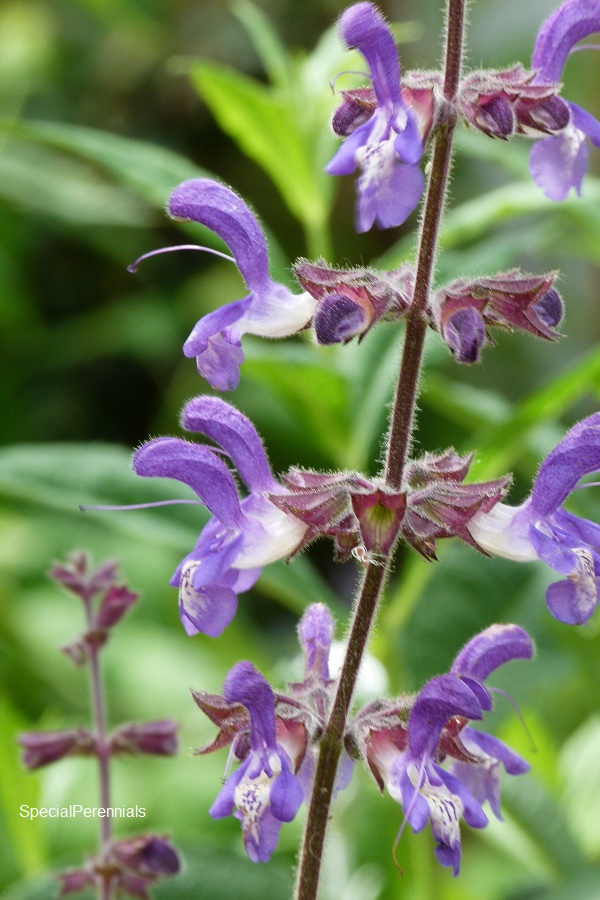
Difficult to pronounce, easy to grow! Large hairy leaves and many spikes to white-lipped purple flowers in early summer. Sun or light shade
Salvia judaica Coming Later
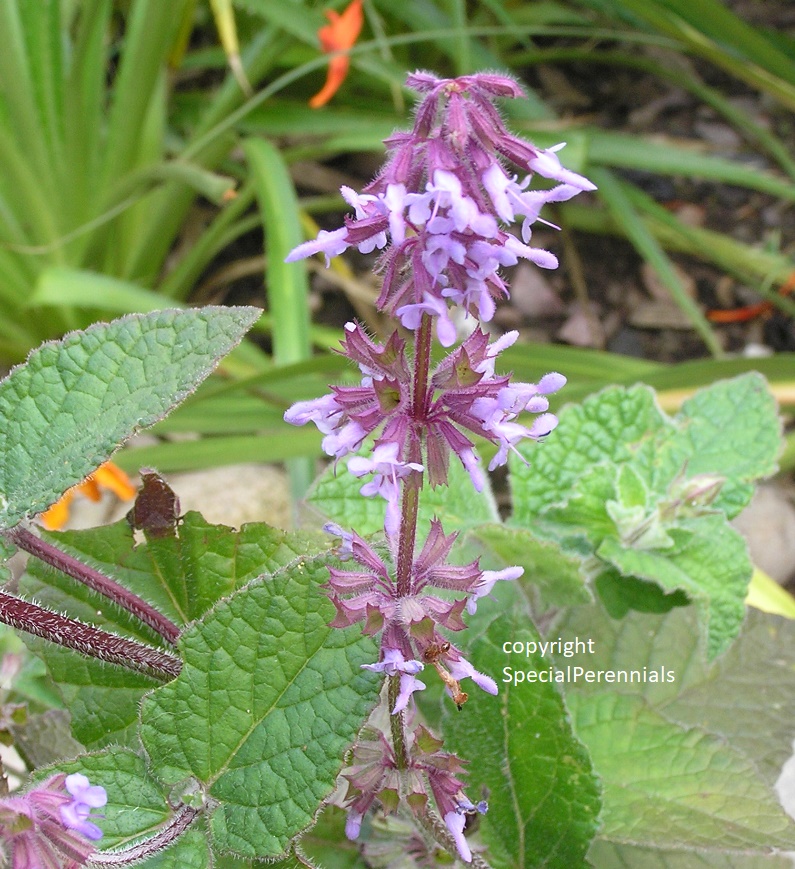
Low growing, felted leaves and purple-backed pale blue flowers on and off through the summer. 1ft / 30cm tall. Survives the driest conditions. Needs a sunny spot
Salvia nemerosa May Night ("Mainacht"
Beautiful deep blue flowers in late May through to July on neat clumping plants. About 1ft 6in / 45cm in flower. Sun or light shade. Not too wet. Great for bees.
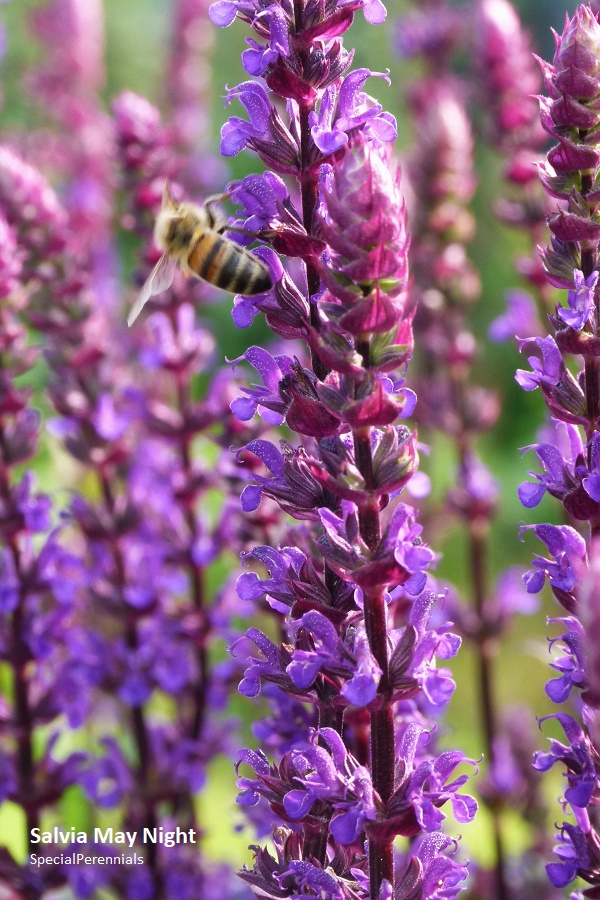
Salvia verticillata Purple Rain Coming Later
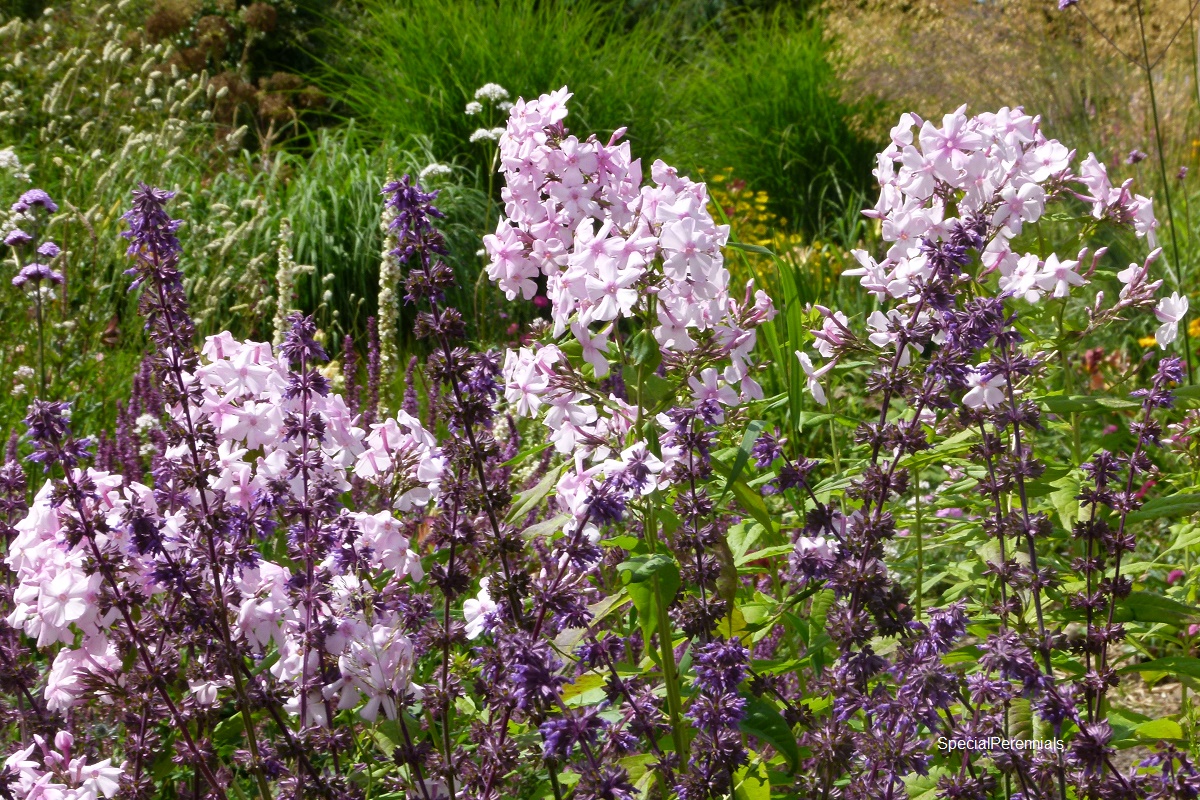
Wonderfully tactile bottle-brush flowers with whorls of purple-backed blue-purple flowers. About 2ft - 2ft 6in. Main flowering period is June - August and then again at the end of September if cut back when first flush fade. A favourite with bees in our garden.
All text and images ŠSpecialPerennials.com 2007 - 2023 A partnership of Janet & Martin Blow. Privacy Statement
